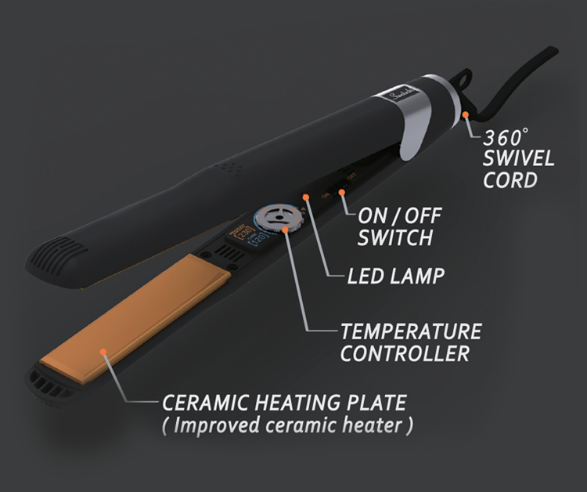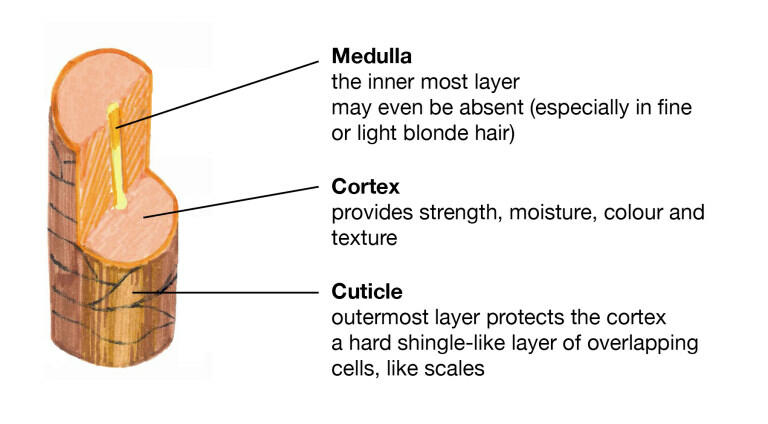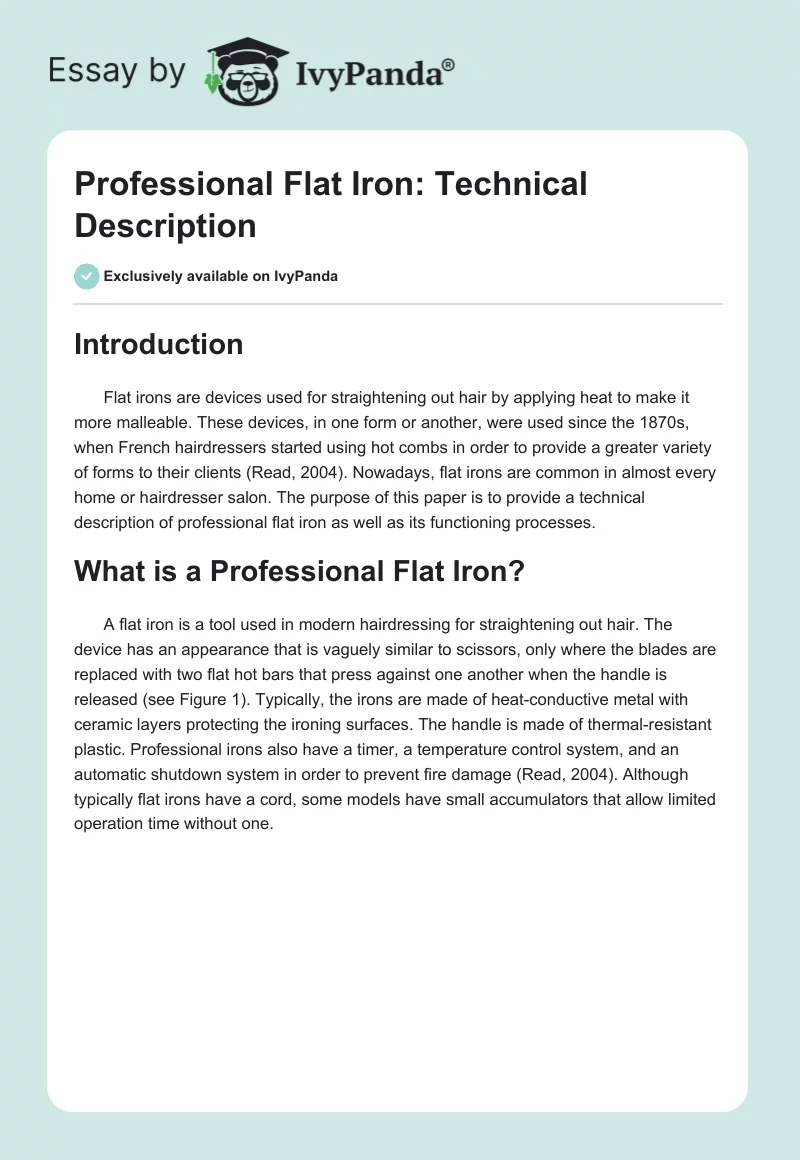Introduction
Flat irons are devices used for straightening out hair by applying heat to make it more malleable. These devices, in one form or another, were used since the 1870s, when French hairdressers started using hot combs in order to provide a greater variety of forms to their clients (Read, 2004). Nowadays, flat irons are common in almost every home or hairdresser salon. The purpose of this paper is to provide a technical description of professional flat iron as well as its functioning processes.
What is a Professional Flat Iron?
A flat iron is a tool used in modern hairdressing for straightening out hair. The device has an appearance that is vaguely similar to scissors, only where the blades are replaced with two flat hot bars that press against one another when the handle is released (see Figure 1). Typically, the irons are made of heat-conductive metal with ceramic layers protecting the ironing surfaces. The handle is made of thermal-resistant plastic. Professional irons also have a timer, a temperature control system, and an automatic shutdown system in order to prevent fire damage (Read, 2004). Although typically flat irons have a cord, some models have small accumulators that allow limited operation time without one.

The Objects and Processes in Hair-Straightening
Human hair is comprised out of three main layers: the cuticle, the cortex, and the medulla (see Figure 2). The cuticle is the hair’s outer layer, which protects the hair’s inner structure from damage. It is also resistant to chemicals (Hoffman, n.d.). The cortex is the main part of the hair, as it occupies most of its mass. It is the area of interest for hairdressers, as it is responsible for hair’s straightness or curliness. Due to being made of protein, it has various hydrogen bonds, which are vulnerable to thermal exposure. The medulla is the inner part of the hair and has no effect on its form.

The working process of the irons themselves is relatively simple and similar to regular irons (Read, 2004). The electricity passes through coils on both sides of the flat iron, which makes them hot. The heat is then transferred to the flat surfaces of the instrument. Ceramic plates on the iron’s working surfaces ensure that the heat is distributed slowly and equally across the hair surfaces, not permitting any overheating or blind spots across the hairline.
Flat irons work by applying temperature to the hair’s cortex, which results in breaking down positive hydrogen bonds, which allow hair to hold its form (Read, 2004). As a result, hair becomes malleable and open to manipulation, such as straightening, bending, or curling. Then, flat iron fixes hair in place between its ceramic jaws, while allowing moisture to help reform the hydrogen bonds, thus fixating the new form in place.
Importance for Readers
Understanding the processes behind hair straightening and flat irons is important for all readers that require hair straightening. It is possible to perform such changes at home, and understanding how it is done helps avoid unnecessary expenditures. Many companies like to bestow nearly magical properties on their equipment, which have nothing to do with the actual hair-straightening processes, in order to raise the price. In addition, a better understanding of the processes can improve one’s own efforts at straightening hair and choosing better tools for the job.
Conclusions
The flat iron is a useful tool for straightening out hair. It operates relatively similar to regular irons, by heating up the ironing presses with electricity. Ceramic surfaces help distribute the heat evenly. It applies hot temperature to the hair’s cortex, making it malleable without damaging the hair. After the heat is reduced, moisture helps hair solidify its new form. Understanding the processes behind hair straightening is important for better performance as well as informed decision-making.
References
Hoffman, M. (n.d.). Picture of the hair. Web.
Read, M. B. (2004). Designing a better hair straightener. Web.


